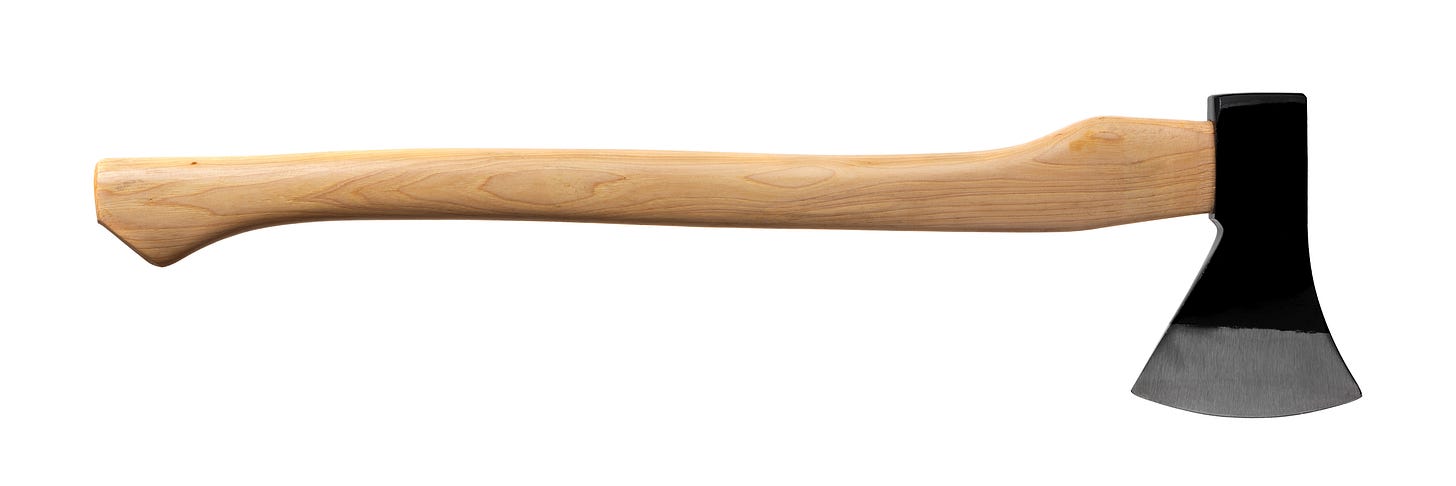Plotting: Morph Your Objects
Make a Simple Thing Become Everything
Not to play favorites, but I love Italy. I love my editor in Milan, Eduardo. I’ve loved the festivals in Mantova and Barolo and Capri1 and Rome2. In Britain publishers talk about queuing and non-queuing countries, and Italy is non-queuing. At book signings people come from all sides, reaching out with their books. The best you can do it pluck a book, ask a name, and hope to deliver the inscribed book back to the right person.
But what I love most about Italy is my translator, Paolo. When we first met he was a muscled-up, tanned guy with a shaved head and a gold hoop through one earlobe. He told funny, name-dropping stories about how the fashion houses paid hefty fees and all travel expenses for the celebrities who agreed to sit ringside at runway shows and look captivated by the clothes.
Best of all, as a young man he’d translated for Princess Grace of Monaco. From her he heard the story of the “Tommy-hawk,” by which I’m sure he meant tomahawk. Grace Kelly had made the film The Swan3 in 1956 with Alec Guinness. They had a heated affair, and while shooting in North Carolina a local native American gave Guinness a souvenir tomahawk. Or as Paola called it, tommy-hawk. For the lighter version of the story, look here. It seems Guinness was a gentleman about some steamy details.
In Paolo’s version, the bouncing tomahawk first appeared in the wedding bed of Kelly, on her honeymoon. Guinness had bribed someone on her staff to place it under her pillow. She discovered the tomahawk and scrambled to hide it before her new royal husband found out. As Paolo told it, the tomahawk was clearly Guinness saying that he still loved her and could reach her anywhere she might go. Kelly found people to bribe and the tomahawk later appeared in Guinness’s bed, and for the rest of their lives they pulled strings to make the souvenir appear as if by magic in the suitcase or bed or bathroom of the other.
At first, as Paolo tells it, the ritual was a joke. A sexy joke to remind them of the passion they’d shared. Over time it took on a sad, sweet deeper meaning. The tomahawk stood for their youth. It testified to their lasting regrets. The remorse over their choices. What had been funny at first tied them to their past as well as to each other. A tribute they paid one another.
As Kelly told it, the tomahawk was a weapon that came to stand for a bond. For love. What’s most important is that it was nonverbal. I will always hammer on this:
Gestures > Dialog > Thoughts
As reported in the link above, the tomahawk last appeared in Kelly’s suitcase, buried in her lingerie. She took it back home and died not long after. Like the sled in Citizen Kane it likely held no meaning for her survivors and was cast off, but it would be nice to see it auctioned for charity.
That’s how a good object can appear and disappear and reappear in your fiction. Each time it makes the past present, yet it evolves to carry more and more emotional meaning. Think of the diamond necklace in Titanic.
As additional examples, look for the ring in Breakfast at Tiffany’s. The ring in Heartburn. The fur coat and cigarette case in Cabaret. The starter’s pistol in They Shoot Horse, Don’t They.4
Thank you to my friend, Paolo, for this way to show how beautifully such objects can work.
Look for an upcoming Postcard from Capri. We’ll touch on the strange nightmare downside of being a writer in a world where everyone expects a writer to be Zelda Fitzgerald, Hunter Thompson and William Burroughs all rolled into one. All of the time.
A big shout-out and special thanks to Antonio Monda who invited me to both Capri and Rome and made those trips fantastic. I hope you’re well in New York or Rome or wherever, Antonio.
Her second-to-last movie. She married Prince Rainier of Monaco that same year.
After watching this film, oh, five hundred times, I at last see how the rebellious Jane Fonda only fucked Gig Young in order to steal his gun. The morphing object. This cleverly hides the starter’s pistol so it can be revealed emerging from her handbag. Michael Sarrazin obliges her by killing her, thus creating the murder. At his courtroom trial he becomes the witness character. Much like how Big Chief commits the murder and leaves the story to become the narrating witness in ‘One Flew Over the Cuckoos Nest.’






Can you hammer more on “gestures > dialogue > thoughts” either here or in a future post? In the context of your other comments on minimalism, I understand you to be saying creating a visual makes the reader respond with their own thoughts, therefore a gesture makes a more meaningful/powerful story. You provide great object examples here, but does the maxim apply to physical expressions also, like a finger-snap or an arched eyebrow? A tomahawk > “I miss our passionate youth and have regrets,” but would you also say a slap > “hands off, cretin!” Hmmm, now that I write it out, I see that it’s true.
Great Post, thank you ❤️. I just finished the podcast today (a second series would be very much appreciated!) and I found it interesting that you mentioned writing stories in the form that songs are written. Is this something you plan on covering in a craft essay at some point? (I do remember your lessons on choruses from the cult/litreactor but this sounded more like you were talking about structure and it piqued my curiosity)